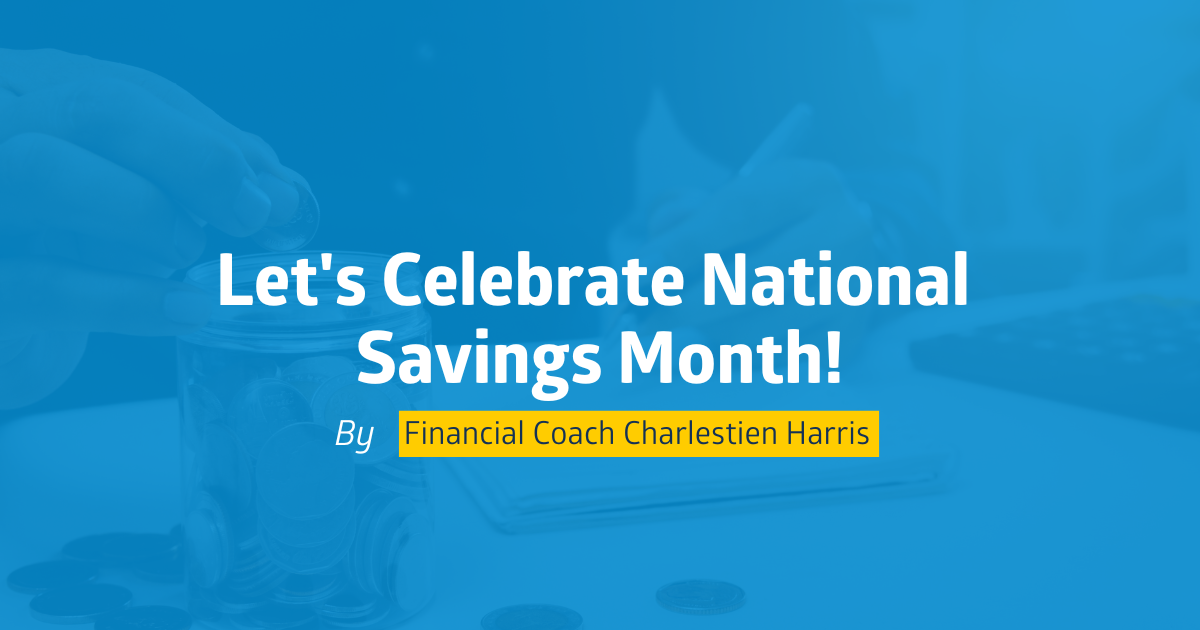By Charlestien Harris, Retired Financial Counselor at Southern Bancorp
Did you know that July is designated as National Savings Month? I didn’t know that fun fact either. It was established to encourage individuals to focus on saving, budgeting, and financial planning. I don’t know if the tax-free weekend in Mississippi is connected to this fact but I hope you enjoyed the savings!
Believe it or not, I get responses from clients that tell me all the time that it is very hard to save money. And I will admit it can be a bit of a struggle to set aside money on a regular basis with any consistency. But, it does not have to be that difficult. By the way, since Mississippi’s tax-free weekend is already gone, there are two more chances to catch one in neighboring states. Tennessee’s tax-free weekend is slated for July 25-27, 2025 and Arkansas’ tax-free weekend falls in the month of August on the following dates of August 2-3, 2025. So, let’s talk about savings. Here are just a few tips to get you started.
- Start small. Don’t sabotage your efforts before they get off the ground. Often it is assumed that when you talk about savings it has to be this huge amount but that is not true. Baby steps are what I would suggest to get started. Try my famous “pop and chip” activity I teach in my financial literacy classes. Try to save $1.50 a day for seven days. That equals $10.50. Then try to save that $10.50 for a month which is equal to $42. Take that $42 and save it each month for the entire year. Guess what – you will have saved $504! Now double that thus allowing you to save $1,008 by the end of the year! Congratulations, you have just saved over $1,000!
- Set up an automatic transfer. Out of sight, out of mind is an old adage that most people are familiar with. In this case, it really does work! Automatic transfer means just that. You do not have to do anything after the initial setup. Money you are trying to save automatically transfers into the savings account. How easy is that! Think of the convenience of you not having to actually deposit money into a separate account while you are depositing money in your checking account. This “set it and forget it” approach ensures consistent saving and removes the temptation to spend the money before it reaches your savings account.
- Learn your personal money story. Take a good long look at how, when, where, and why you spend your money the way you do. Whether you know it or not you have a “money story.” What is a money story? The formal definition of a money story is that it is a personal narrative that shapes an individual’s relationship with money. This also encompasses your beliefs, feelings, and behaviors related to it. It is often formed during childhood and adolescence through interactions with family, peers, and social surroundings. Your personal money story can significantly impact the financial decisions you make. Understanding your money story is crucial for recognizing patterns and making informed financial choices.
- Assess your spending habits. Take a good look at your current budget to see if you can make any adjustments. Ask yourself if what you are purchasing is a need or a want. Establishing this distinction will ultimately help you to decide when and how you will reduce your spending. Another way to assess your spending is to take a look at using cost-saving measures such as turning the thermostat down, turning the lights out when you leave an unoccupied room or reducing your food expenses by creating a grocery list when you go grocery shopping. Try to be as honest as you can with yourself and also include all interested parties so the adjustments you make will benefit all involved. This simple move can add up quite nicely when it comes to building a savings nest egg.
- Make savings a monthly expense. Now that you know what you spend a month, you can begin to recreate your budget. Your budget should show you what your expenses are relative to your income. This should also help you to plan your spending and limit your overspending. Include a savings category in your budget and aim to save an amount that feels comfortable to you. A budget usually consists of fixed, variable, and periodic expenses. Adding your savings amount to your budget as a fixed expense can go a long way to establishing a savings habit. Making this move can also add to the consistency factor of starting a savings habit.
Trust me, we’ve all been there. Saving money isn’t always the easiest thing to do. But take heart and please don’t give up! Saving money is definitely within your reach. All it takes is a little planning, a little awareness, and some well-planned money moves by you. Saving money does not have to be a hard goal to accomplish. As I mentioned before, July is National Savings Month and this would be a great time to start your savings journey. Learn how to prioritize your savings goals. Setting clear goals will give you a target to work towards and you will more than likely reach the savings goal you set.
For more information on this and other financial topics, you can email me at charlstienharris77@gmail.com or write me at P.O. Box 1825 Clarksdale, MS 38614.
Until next week – stay financially fit!
